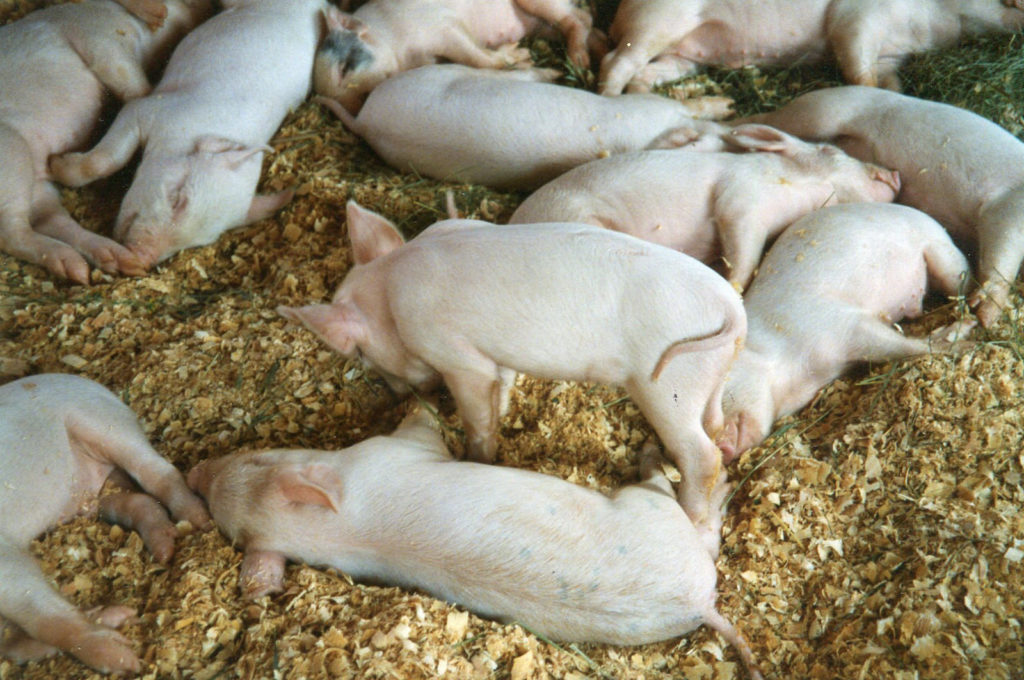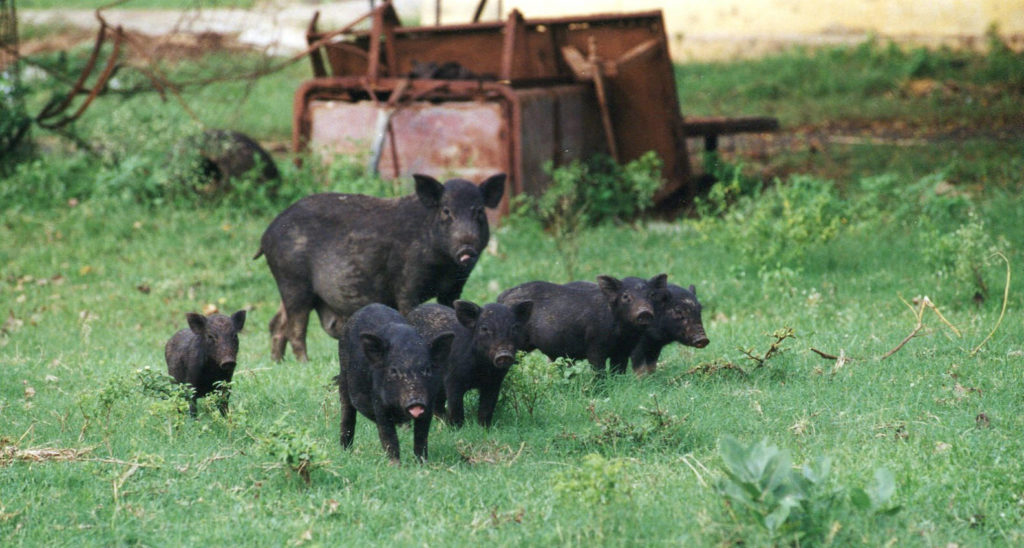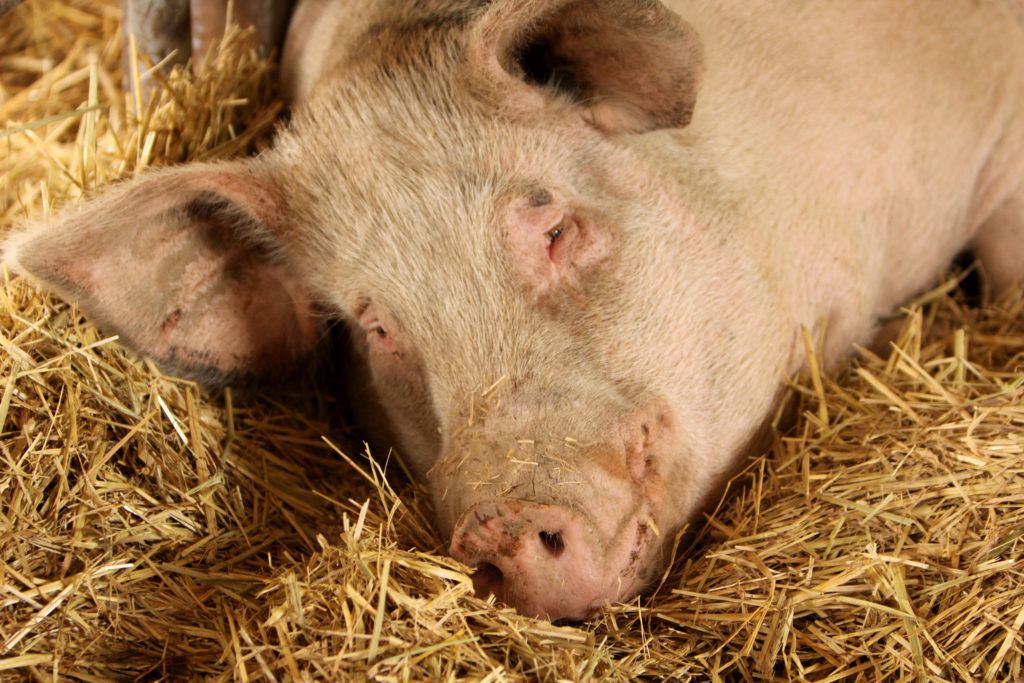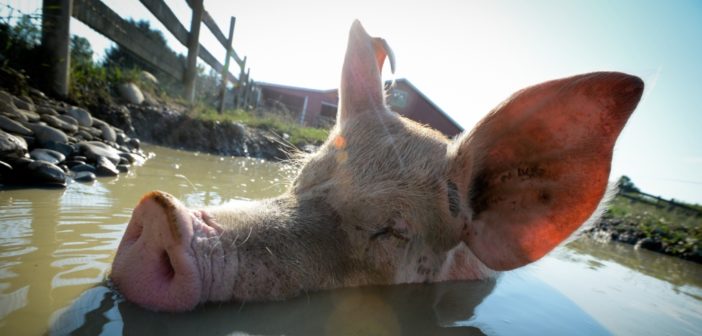To celebrate Year of the Pig, we thought we would share some interesting facts about these cheeky, lovable creatures.
1. Pigs love to play
Pigs love playing with toys and have fun playing chase with each other. Play is a very important part of development for all young animals and pigs are no exception. Play is also important for adult pigs, as it solidifies social bonds and communicates comfort and happiness.
2. Pigs are clean animals
Pigs like to keep clean and do not like to wallow in their own waste. They will use a corner of their living area as a toilet to ensure they keep the rest of it clean.

Napping piglets. Image credit Kim Bartlett – Animal People, Inc.
3. Mother pigs build nests
Ensuring their babies are comfortable and protected is just as important for pigs as it is for humans. Mother pigs build a nest of straw and hay for their piglets to ensure they are comfortable and warm.
4. Pigs are forest dwellers
The modern day domesticated pig is a descendant of the wild boar, a forest dwelling animal. Wild boar spend much of their day foraging and rooting for food. Domesticated pigs still share much of their wild relatives’ instincts and behaviors.
5. Pigs walk on two toes
Pigs have four toes on each foot, but they only actually walk on two of their toes, as the outer toes are used for balance and rarely touch the ground.

A free-roaming pig family in India. Image credit Kim Bartlett – Animal People, Inc.
6. Pigs are social animals
Pigs are extremely social. They form close bonds with other pigs and love close contact and lying down together. Pigs can recognize up to 30 other individual pigs, and are less stressed when in the presence of one of their companions.
7. Pigs ‘sing’ to their piglets
Pigs communicate constantly with one another. More than 20 of their oinks, grunts, and squeals have been identified for different situations, from wooing their mates to expressing hunger. New-born piglets learn to run to their mothers’ voices, and mother pigs ‘sing’ to their young while nursing.
8. Pigs have a great sense of smell
Pigs’ sense of smell develops early and is important for survival. They can and need to follow chemical cues learned early in life, such as the odor of their mother. Older pigs use their sense of smell as the predominant basis for individual recognition.
9. Pigs have impressive long term memories
Research has shown that pigs can remember objects and actions for over three years. Dr. Stanley Curtis, formerly of Penn State University, put a ball, a Frisbee, and a dumbbell in front of several pigs and was able to teach them to jump over, sit next to, or fetch any of the objects when asked to, and they could distinguish between the objects three years later.
10. Pigs are excellent problem solvers
Pigs can identify and fetch objects upon request, they can understand verbal commands that involve an item and an action, such as ‘push the dumbbell onto the mat,’ and they can make comparisons of objects based on color, odor or location.
11. Pigs can perform abstract tasks
Pigs are capable of learning how to use a joystick to move objects on a computer screen. When they move the object into the desired position they receive a reward. Pigs learn to do this as quickly as chimpanzees, demonstrating advanced cognitive abilities.
12. Pigs can understand other pigs
Pigs are capable of assessing what information another pig has in relation to them with regards how to perform a task with a reward. They can then choose to follow the individual with more information than themselves to receive the same reward.

A pig lounging in the hay. Image credit ciao-chow, CC BY-SA 3.0.
13. Pigs demonstrate empathy
Researchers carried out an experiment to determine whether pigs might empathize with each other. They played music to pigs and trained them to either expect a good experience (food) or a stressful experience (social isolation and handling). The researches then paired the trained pig with an untrained pig and played the music to them all. Trained pigs showed that they learned what the music predicted for them, showing either ‘happy’ behaviors or stress. The non-trained pigs reacted to the behavior of the other pig, showing signs of stress when paired with a pig trained to expect a stressful experience.
Featured image: Julia the pig enjoying the summer at Farm Sanctuary in New York. Image credit Jo-Anne McArthur / We Animals






